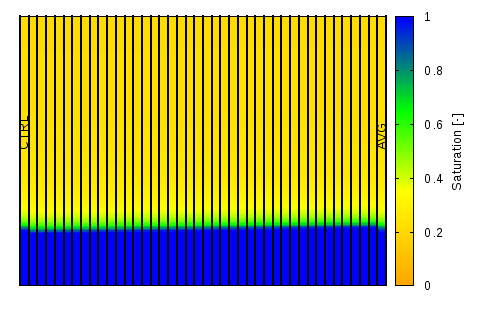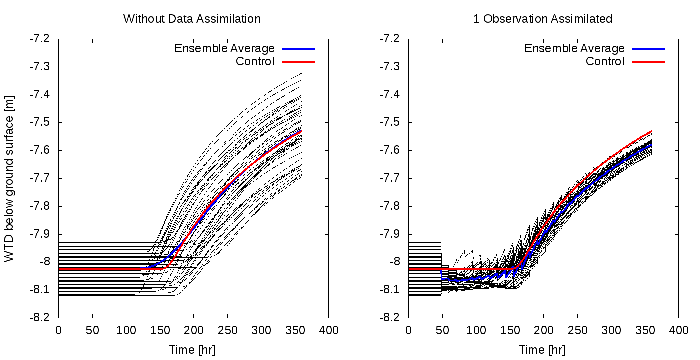Atmospheric forecast model outputs can be improved by periodically incorporating observed information into model calculations. In this manner, forecast models can be adjusted and calibrated to better-honor actual conditions in the simulated system. Observations can be assimilated into forecast models using a variety of methods including Kriging, three- and four-dimensional variational analysis, and Kalman filtering.
We apply the Ensemble Kalman Filter (EnKF) algorithm contained in the Data Assimilation Research Testbed (DART) software package to the TR32-developed fully-coupled hydrologic and atmospheric modeling system TerrSysMP. This data assimilation system will allow hydrologic observations such as soil moisture, groundwater table depth, and discharge, land surface observations such as energy fluxes and soil temperature, and atmospheric observations including temperature, wind speed and precipitation to be used to inform simulations of the complete hydrologic-land surface-atmospheric system.
This system, currently under development by project Z4, has already been set up to assimilate hydrologic observations into the hydrologic portion of the TerrSysMP model. The accompanying figure shows the results of a preliminary test case using the ParFlow-DART capability to assimilate an observation of groundwater pressure head in an ensemble of heterogeneous columns. Groundwater table depths from a 40-member model ensemble are shown with their ensemble average and the control case (from which the observations were drawn) through a 360-hour model run. The result is a significantly reduced ensemble variance beginning with the first observation update cycle at hour 48.
Data assimilation capabilities for the TerrSysMP modeling system are being developed by project Z4 in conjunction with project C6. This capability will allow a bridge between the observation and measurement projects and the simulation and modeling projects of the TR32 to produce an unified forecasting system informed by field-collected data.











